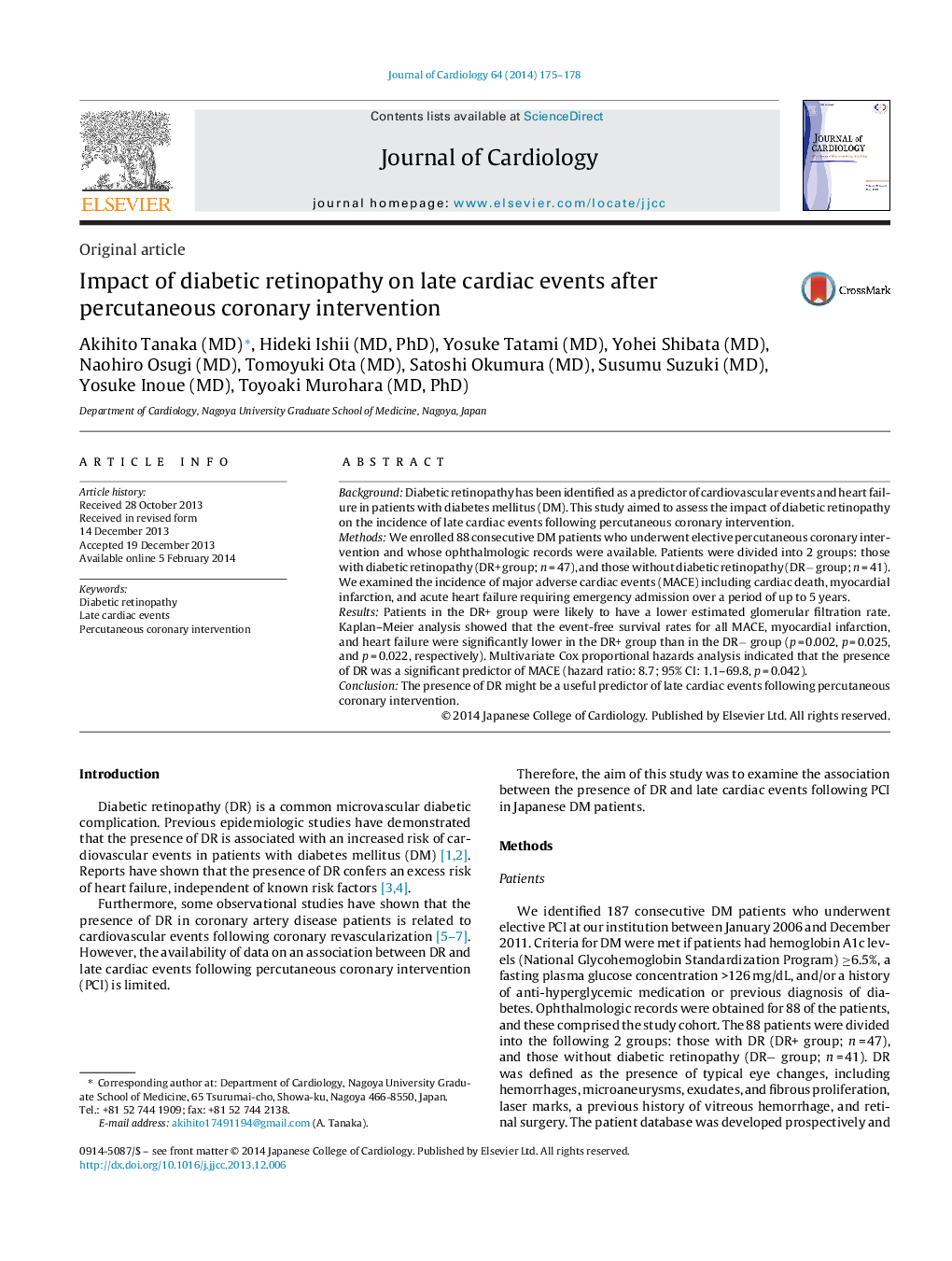| Article ID | Journal | Published Year | Pages | File Type |
|---|---|---|---|---|
| 5984081 | Journal of Cardiology | 2014 | 4 Pages |
BackgroundDiabetic retinopathy has been identified as a predictor of cardiovascular events and heart failure in patients with diabetes mellitus (DM). This study aimed to assess the impact of diabetic retinopathy on the incidence of late cardiac events following percutaneous coronary intervention.MethodsWe enrolled 88 consecutive DM patients who underwent elective percutaneous coronary intervention and whose ophthalmologic records were available. Patients were divided into 2 groups: those with diabetic retinopathy (DR+ group; n = 47), and those without diabetic retinopathy (DRâ group; n = 41). We examined the incidence of major adverse cardiac events (MACE) including cardiac death, myocardial infarction, and acute heart failure requiring emergency admission over a period of up to 5 years.ResultsPatients in the DR+ group were likely to have a lower estimated glomerular filtration rate. Kaplan-Meier analysis showed that the event-free survival rates for all MACE, myocardial infarction, and heart failure were significantly lower in the DR+ group than in the DRâ group (p = 0.002, p = 0.025, and p = 0.022, respectively). Multivariate Cox proportional hazards analysis indicated that the presence of DR was a significant predictor of MACE (hazard ratio: 8.7; 95% CI: 1.1-69.8, p = 0.042).ConclusionThe presence of DR might be a useful predictor of late cardiac events following percutaneous coronary intervention.
